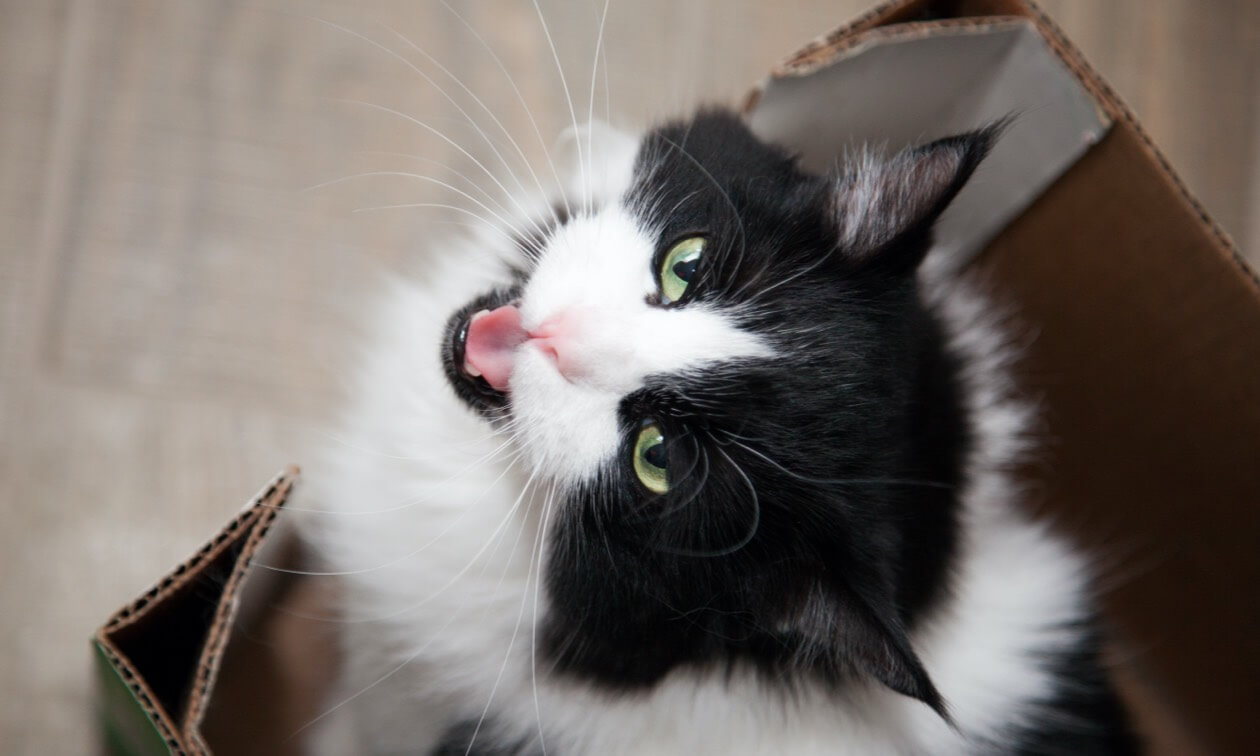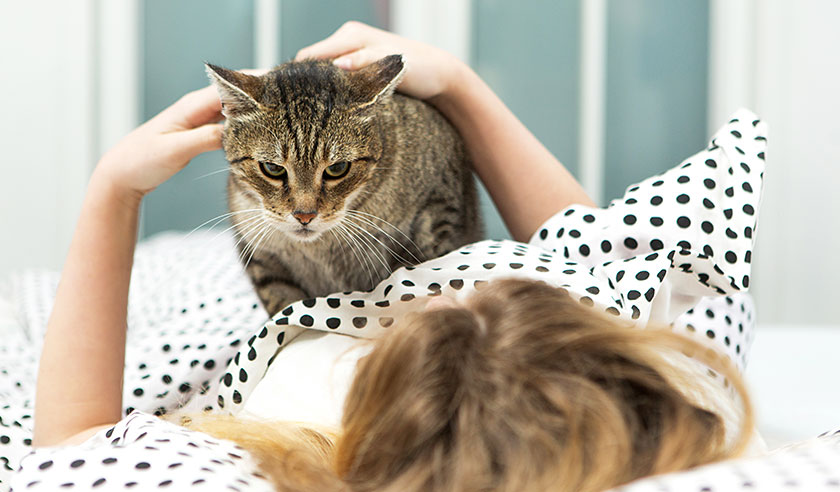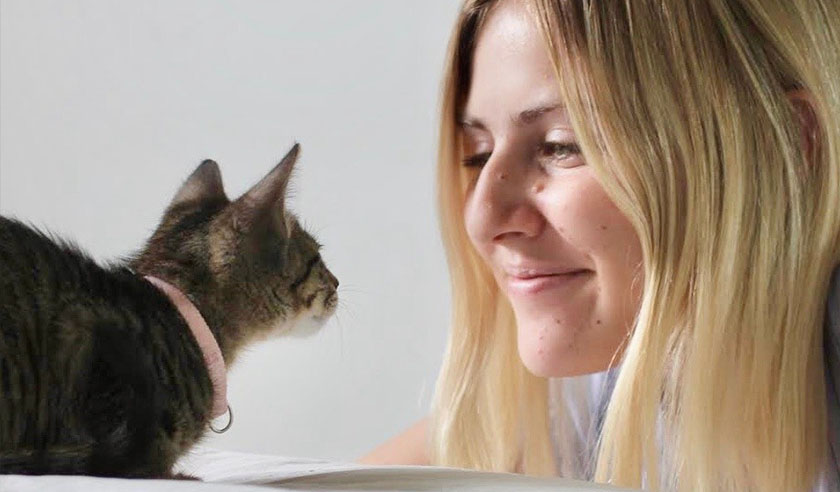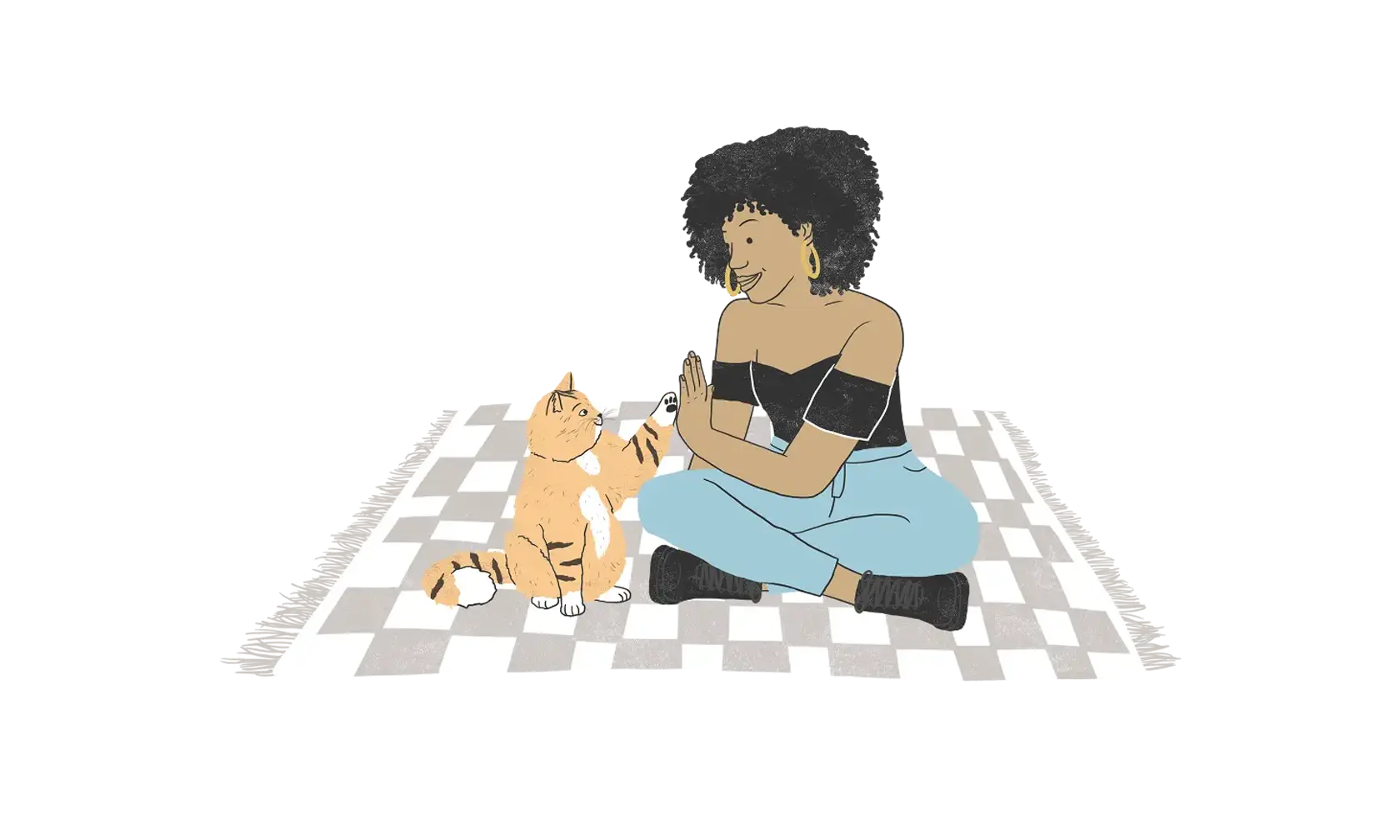Did you know that at least 23 different vocalizations have been described in cats?1 How can we understand what our cats are trying to tell us with just a meow or a trill? Here are some common cat sounds explained, ways to identify them, and insights on what they mean.
Why Cat Sounds Are Hard to Describe
There are a variety of names, classifications, and descriptions of cat sounds (so don’t be surprised if you read different things in different sources). All cats have their own unique behaviors, and they also live vastly different lives. For example, a hiss from a feral cat may sound more intimidating in a life-or-death situation than it would from your housecat who’s walking past the family dog. Coming up with universally accepted names, descriptions, and meanings for sounds that work for every cat in every scenario is a challenge.
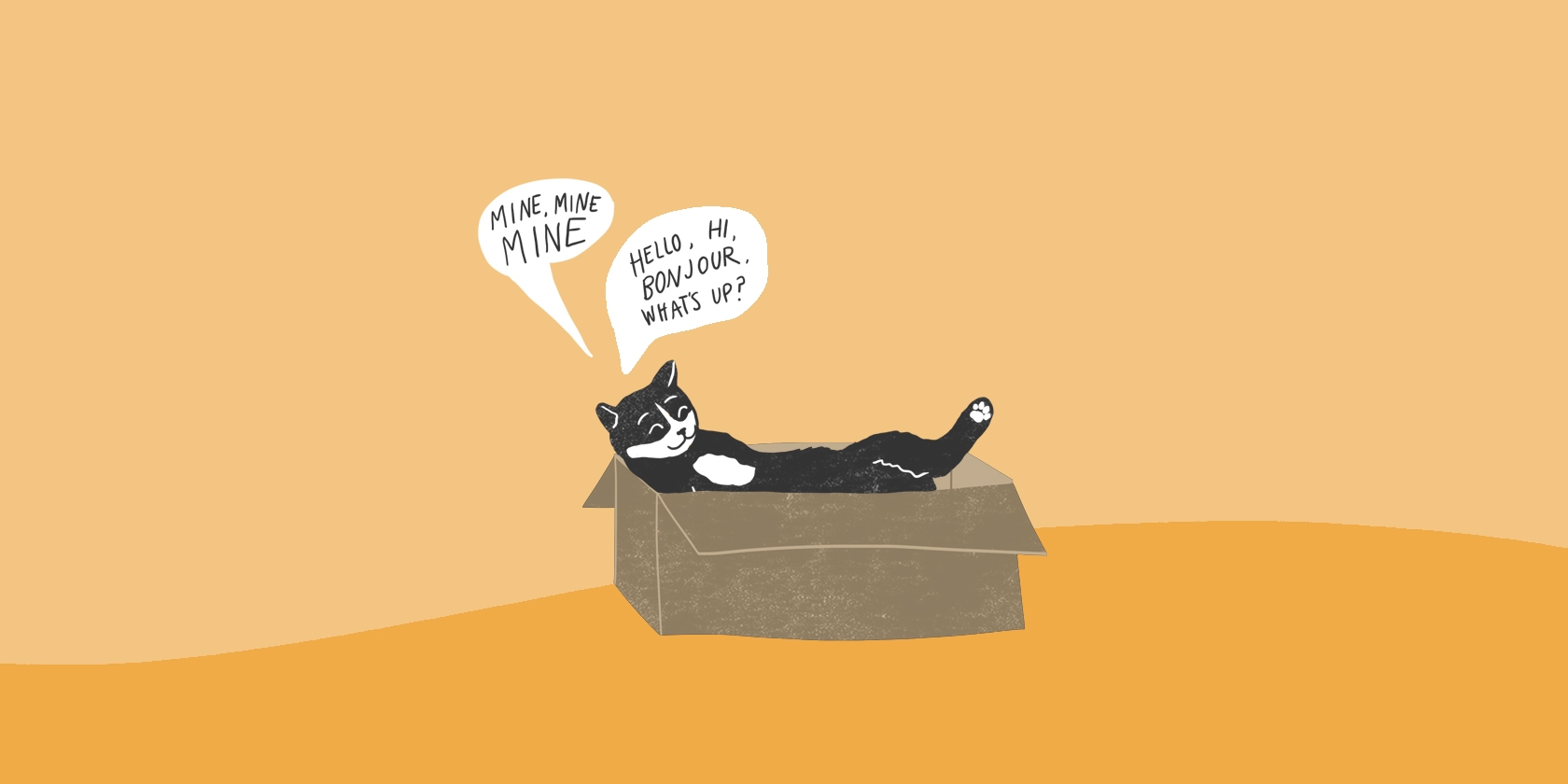
Meow
This is probably the most commonly-described cat greeting. It sounds a lot like the name, usually with a “meow” or “rrrr-ow,” where the mouth moves from open to closed. The interesting thing about meowing is that it’s only really used in cat-to-kitten interactions among cats. They don’t generally use this vocalization with other adult cats.
So, what does it mean when a cat meows (and why are they constantly meowing at their humans)? Because they’ve learned that it gets a reaction from us. Can you tell the difference between your cat’s “I’m hungry” meow and their “I want to play” meow? It’s not all in your head. There’s ongoing research around the idea that cats can make slight adjustments to their vocalizations to give them specific meaning just for us.2
Yowl
Yowls are usually an aggressive vocalization where the mouth stays open in one position, and the cat lets loose. You may hear yowling referred to as caterwauling. So why do cats yowl? Cats that are experiencing pain or discomfort from something like constipation or a urinary blockage may make this sound.
Howl
Howling is another form of communication that is generally categorized as aggressive. It differs from the yowl as the mouth moves from an open to a closed position.
Why do cats howl? Cats typically howl when they are feeling aggressive, but your cat may also howl at night if they have cognitive issues causing confusion or distress.
Purr
Purring is probably the most loved cat sound. They’re considered “contact” vocalizations, often initiated by contact with someone or something the cat enjoys. Interestingly, a cat purr can be continuous during both inhalation and exhalation. The mouth usually stays closed during a purr. Some cats purr more than others, and you may see purring increase or decrease with age and other life changes.
What does it mean when a cat purrs? Purring can be a sign of contentment and comfort, brought on by things they like, such as petting, verbal attention, and even nursing. Purring is also used as a form of self-soothing. This is why cats often purr when injured or in scary situations. There’s even research to suggest that the vibrations of purring have a healing effect on the body, which could also explain why injured cats purr.3
Trill or Chirrup
This is a fun cat sound that, like many others, has at least two common names. It’s part of their greeting repertoire, often sounding like a “brrrr,” sometimes with an inflection at the end like a question. Mother cats use it with their kittens, while friendly adult cats may trill upon meeting. You might hear it when you approach your cat, as it’s often related to contact. The mouth stays closed during a trill.
Chirp and Chatter
Here we have one of the lesser-understood cat sounds. You may hear your cat chirp or chatter when they’re at the window watching a bird. Their mouth opens and partially closes quickly with each chirp, sounding almost like a bird or squirrel. It’s not easy to describe, but it’s unmistakable when you see it.
Why do cats chirp? There are different theories about the reason for this sound. Some suggest it’s meant to lure prey in or make the cat seem like less of a threat when stalking prey, while others believe it may be a way to release pent-up energy from seeing prey and not being able to hunt it. There’s no reason to think it’s a negative experience for your cat as long as they aren’t showing other signs of stress.
Hiss
The defensive hiss is an involuntary response where the mouth is open and teeth are exposed. Cats tend to use it before an aggressive encounter in hopes of ending things before they progress to something more dangerous. You’ll see cats hiss when they feel cornered or trapped. Hissing can be used to tell humans, “no!” If you reach out to pet a fearful cat, they may hiss as a first warning before they swat.
Spit
The spit takes hissing to the next level. It’s a red alert threat usually reserved for extreme situations where the cat feels they are in danger.
Growl
This is another defensive vocalization with the mouth open and held in one position. The low, steady sound is meant to intimidate would-be predators or others your cat thinks may harm them. It’s meant to say “Back off!”
Snarl
Hopefully, you don’t hear snarling often. It’s usually present during a physical attack. It is seen as an offensive vocalization where the upper lip is raised and the mouth is open.
Each cat is unique. While we have some standards to assign names and meaning to their vocalizations, it’s important to know that breed, personality, history, and circumstance can impact that meaning. This is just to say there’s wiggle room in interpreting your cat’s conversations with you. It’s essential to consider their personality and the situation, and helpful to familiarize yourself with their normal behavior, including vocalizations. This will enrich your time with them and help you detect changes that could warrant medical attention.
ZPC-01968R1
- G Landsberg, W. Hunthausen, L. Ackerman. Behavior Problems of the Cat & Dog Third Edition. 2013. Pg 25.
- John W.S. Bradshaw, Rachel A. Casey, Sarah L. Brown. The Behaviour of the Domestic Cat 2nd Edition. Pg 93
- Is There Healing Power in a Cat’s Purr. Orthopedics This Week. https://ryortho.com/breaking/is-there-healing-power-in-a-cats-purr/. Accessed June 12, 2025.
